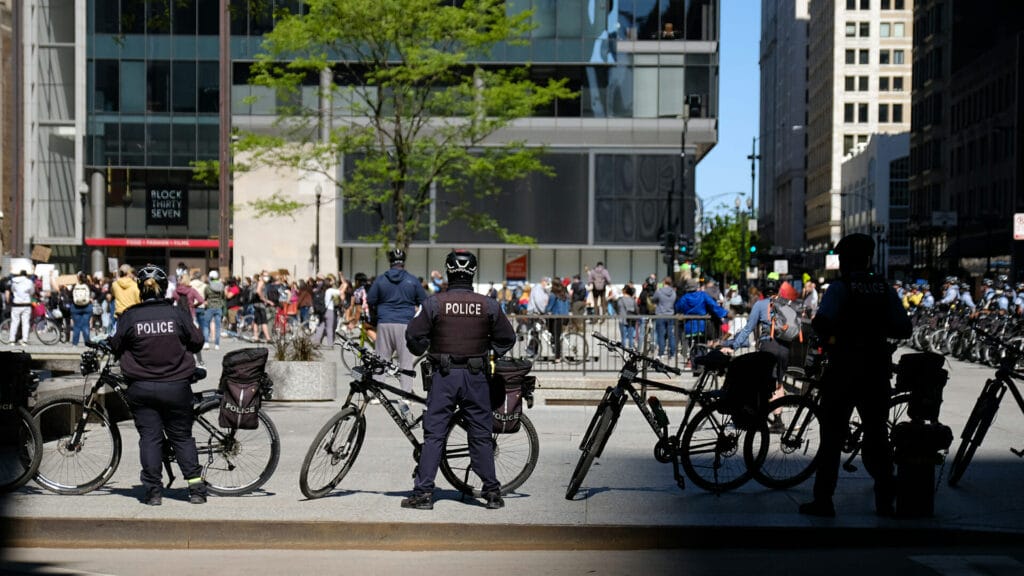We’ve all recoiled in disbelief and horror as we watched scenes of violence stream across our TVs. The violent insurrection we saw in the U.S. capitol was unprecedented. That is to say nothing of the collapse in security measures and barriers that allowed rioters to breach our nation’s capitol. Deservedly so, leaders are alarmed about how this could happen in one of the most heavily protected cities in the world. People want to know what comes next, how they can navigate this new wave of politically-inspired violence, and who might be most at risk. According to the FBI, armed protests are being planned in all 50 state capitals for inauguration day (Jan 20th). There is also actionable intelligence that the country is headed for a period of protracted civil unrest and less-than-peaceful protests throughout the beginning of this year. As always, our team is here to help you prepare and harden your facilities so that this sort of politically-inspired violence has a minimal impact on your operations.
The peaceful transfer of power in the United States has long been one of our most sacred traditions. Never in our history has a person or persons tried to overturn an election, let alone by force. The point is the last few months have proven that words do have consequences, and the spread of misinformation, conspiracy theories, and threats of escalating violence have created a toxic environment. When rioters stormed the U.S. Capital the resulting property destruction, and the risk of harm to not only our government officials, but the damage to our fundamental way of life cannot be understated. Intelligence sources maintain that the threat will continue for the foreseeable future, and that organizations need to have a plan in place.
So what can your organization do about preventing civil unrest? How can leaders prevent their locations from becoming the target of protests? How do you minimize impact of civil unrest, and the escalation of violence? Is there a way to avoid civil and social unrest risk altogether?
Let’s find out.
Social Media Monitoring
By monitoring blogs and social media, organizations can tap in to a vast sea of open-source intelligence (OSINT). These sources indicate that online chatter often precedes large demonstrations, as it did before the January 6th riot. For example, many of the contributors will discuss planned activities but routes, communication methods, and meetup locations. Social media discussions on open websites such as Facebook and Twitter became more frequent, particularly with regard to possible riots. As a result of OSINT chatter, Mayor Muriel Bowser, Washington, D.C., has sought assistance from the Department of Homeland Security in increasing the security presence in and around the Capitol, canceling all permit demonstration requests. Business owners and residents have begun posting the hashtag “#DontRentDC” to discourage property managers from inadvertently granting short term rentals to people traveling from out of town with the intent to participate in the riot.
Of particular concern is the so-called ” Million Militia March “. Plans by extremist groups to return to the Capitol on inauguration day are posted on multiple social media forums and demand armed marches and violence. T-shirts and posters for the event have been made and posted on numerous social media platforms. Other locations mentioned in social media posts include Salt Lake City, Utah, state buildings in Pittsburgh, Pennsylvania, and Columbus, Ohio. Given the many posts calling for action on various social media and blogging sites, demonstrations are likely. Needless to say, social media monitoring is extremely valuable.
The recent removal of Parler, an application that advertises strict adherence to the right to freedom of expression, from Apple and Google application stores and Amazon web servers may increase the likelihood of demonstrations at the offices of these companies. The decisions of these companies to remove Parler was followed by posts on various social networks and blogs advocating violence against employees of these technology companies. However, the probability that the crowd size will be similar to those observed in D.C. on January 6 for any potential anti-technology demonstrations remains low.
Avoid Capitals and “Parade Routes”
Businesses near government buildings are encouraged to track demonstration activity in and around their locations and opt for early closings for the next seven days. Additionally, it is recommended that employees living in the immediate areas of the planned demonstrations limit movement.

With protests popping up at the homes of congress people more and more, politicians are likely to draw the ire of protestors for the foreseeable future. If you work for a politician, or are located near a politician’s home or office, you are much more likely to be in the crossfire. The Proud Boys and other extremist groups are planning to carry out armed protests in all 50 state capitols on Sunday, January 17th, according to multiple sources. Although it is a broad statement, these announced plans should be taken seriously by residents and businesses near the state Capitol buildings in cities like Seattle, Portland, Atlanta and Washington D.C., where local businesses and storefronts are highly susceptible to vandalism.
“Just stay home, that’s the best advice I can give.”
Dell Spry | Managing Director of Corporate Investigations, FBI (Ret)
According to Chesley Brown’s Managing Director of Corporate Investigations and retired FBI investigator, Dell Spry, “Just stay home, that’s the best advice I can give.” According to his contacts within the FBI and NSA, the threat of white nationalist violence has never been higher than it is today. We simply don’t know the full scope of the situation, and as such, we’re encouraging everyone to stay away for safety.
The Threat of QAnon and Workplace Violence
While QAnon is not an organization, it is a contagious ideology that has spread throughout the country and the world. While not all believers in QAnon’s ideas are members of extremist groups, they all subscribe to a basic set of beliefs: that they or their way of life is threatened, or that others are threatened by dark forces that they must expose and defeat. It is a deeply paranoid mindset. Paranoia is an established risk indicator for violence in the workplace. Employees who are convinced that their co-workers, supervisors, or organization present imminent risk can act proactively to protect themselves or others they believe are in danger.
Businesses Must Develop a Layered Security Approach to Harden Facilities
Regardless of whether your organization is large or small, public or private, there are basic security tactics that can protect your building and residents from unwanted attention or attack. The goals of hardening your facility are to deter, deflect, divert, and deny. By projecting the image of a safe, impenetrable operation to someone performing pre-operational surveillance, a site for political action, or looking for a crime of opportunity you can stop the fight before it even starts. Hardening can and should be considered an effective offensive strategy to threat management.
Fail to plan, Plan to fail.
As you look further inward, offices, conference rooms, and restrooms should have doors that open out into the hallway to prevent entry. Doors should be locked inside, either with no window to the hallway or with a window. Keep bottles of water and snacks like protein bars stocked in your safe room in case of an extended shelter in place situation. You should also maintain a separate communications system for your safe room in case cellular services fail or become overwhelmed.
Practice your plan regularly for crises and have a clear communication plan. Talking about threats reduces the fear. Giving them the knowledge for how to take care of themselves and each other can inspire confidence across your entire organization. By enacting a few of these tips you can protect your property, people, and assets behind layers of security. As former CIA and FBI Director William Webster said, “Security is always seen as too much, until the day it’s not enough.”
Conclusion
Every hour we continue to learn more about this situation from our network of resources. This is a dynamic situation that continues to evolve. We, along with our partners, will continue to plan for and manage on-the-ground events. Below is a list of resources organizations can use to help understand and plan for ongoing civil unrest in your area. As always, if you think you, or your organization may be at risk, our security experts are here to help. For over 30 years we’ve helped businesses anticipate and navigate risk before it becomes a crisis. If you would like to learn more about how we can help you protect what matters most, let’s talk.
Additional Resources
Sign up!
For industry-leading guides and analysis sign up for our blog below.
Latest News
risk-takers #07 Jack Barsky – Former KGB Spy
As part of our on going conversation around corporate espionage, we decided to sit down with a real KGB spy for some insider knowledge. In this week’s episode, Brent sits down with author and former KGB spy Jack Barsky to discuss the growing threat of corporate espionage, how bad actors can access a company’s most valuable secrets, and how that information gets used. This is one of the most fascinating episodes of the season, so tune in! You’re sure to learn a lot.
risk-takers #06. Human Trafficking with Bazzel Baz
Human trafficking touches nearly every city, county, state and locality in America. Yet law enforcement remains critically under prepared to handle this insidious business. Bazzel Baz, star of NBC’s hit show The Blacklist, and real life CIA super spy is often refereed to as the patron saint of missing children. In this week’s episode Baz sits down with Brent and Dell to discuss the ways human trafficking affects our communities us and how we can stop it. This is a fascinating discussion looking into the darker side of human nature — you don’t want to miss it!
Podcast | Risk Takers Series #06. Human Trafficking with Bazzel Baz
Human trafficking touches nearly every city, county, state and locality in America. Yet law enforcement remains critically under prepared to handle this insidious business. Bazzel Baz, star of NBC’s hit show The Blacklist, and real…
risk-takers #05 Corporate Counterespionage
Its not always the stuff of cold war spy novels but corporate or economic espionage continues to affect businesses all over the world both large and small at an exponential rate. It seems like there’s a new breach every time you turn on the news. The difference is the biggest companies have the resources and budget the protect themselves. But where does that leave SMBs? In this week’s episode, Brent and Dell Spry sit down to discuss the growing threat of corporate espionage, how businesses are exposing their intellectual property. They’ll also cover simple steps small businesses can take to stop those efforts in their tracks. Tune in to this fascinating discussion.
Podcast | Risk Takers Series #05 Corporate Counterespionage
Its not always the stuff of cold war spy novels but corporate or economic espionage continues to affect businesses all over the world both large and small at an exponential rate. It seems like there’s…




